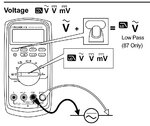P
ParkerMike
Guest
When measuring AC outlets at different nightclubs, the AC outlets are higher at 140VAC.
Can Power Conditioners or a UPS system handle 140VAC outlets as the power source?
I would think it can cause the power transformers in a power conditioner or UPS system to open or short out?
I'm not sure how high in VAC a power transformers primary can handle from an AC wall outlet
If I use a Variac on a 140vac wall outlet , I can't bring the 140vac down because a Variac dial max is at 120vac , plus it will open or short out the variac transformer plugging it into a 140vac wall outlet i would think
Plus when I'm measuring with a DVM meter in AC mode, it's RMS at 140VAC
The 140VAC RMS is higher in voltage because it's RMS not at peak so the AC wall outlet is at 160VAC peak right?
Can Power Conditioners or a UPS system handle 140VAC outlets as the power source?
I would think it can cause the power transformers in a power conditioner or UPS system to open or short out?
I'm not sure how high in VAC a power transformers primary can handle from an AC wall outlet
If I use a Variac on a 140vac wall outlet , I can't bring the 140vac down because a Variac dial max is at 120vac , plus it will open or short out the variac transformer plugging it into a 140vac wall outlet i would think
Plus when I'm measuring with a DVM meter in AC mode, it's RMS at 140VAC
The 140VAC RMS is higher in voltage because it's RMS not at peak so the AC wall outlet is at 160VAC peak right?
